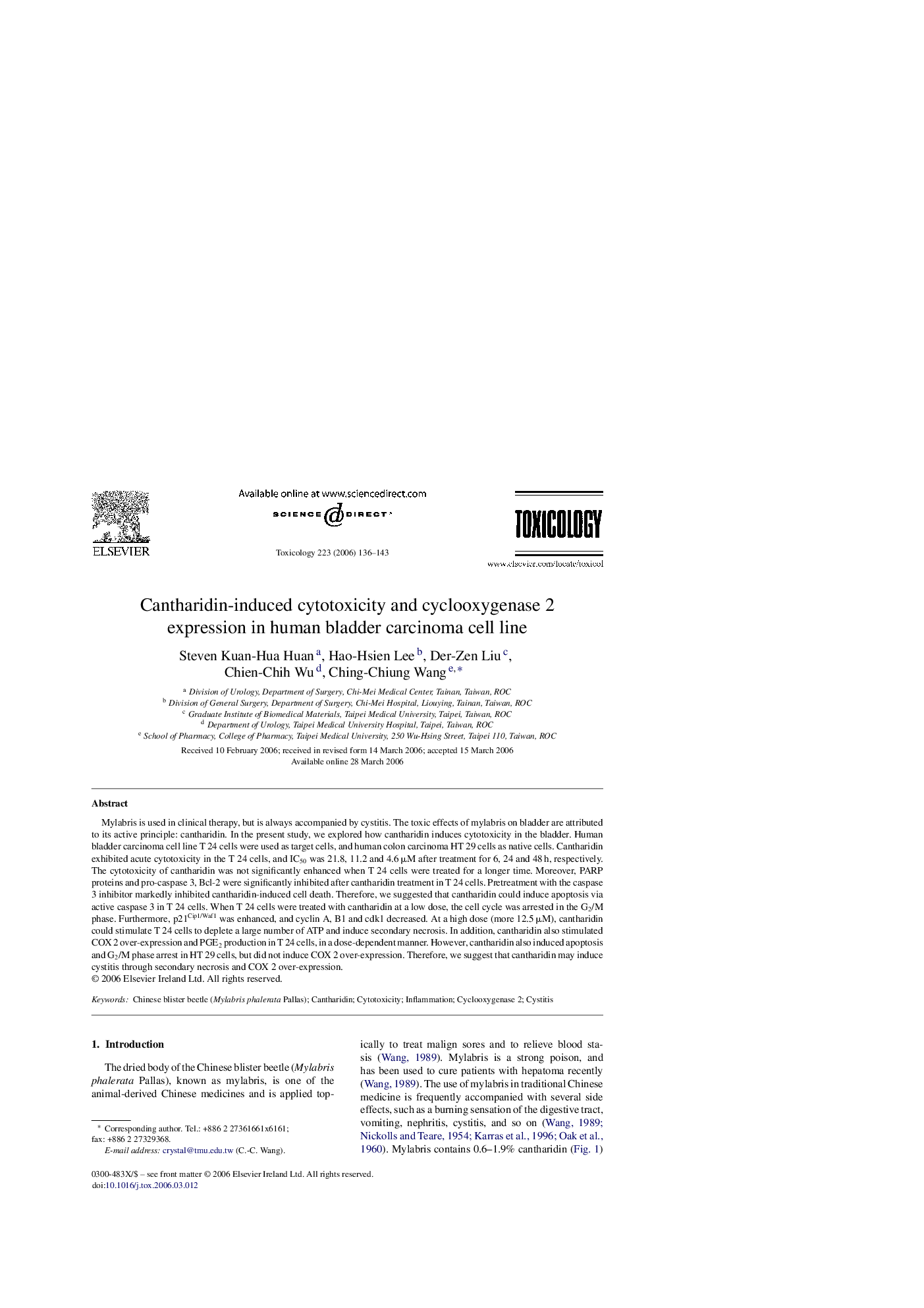| Article ID | Journal | Published Year | Pages | File Type |
|---|---|---|---|---|
| 2598264 | Toxicology | 2006 | 8 Pages |
Mylabris is used in clinical therapy, but is always accompanied by cystitis. The toxic effects of mylabris on bladder are attributed to its active principle: cantharidin. In the present study, we explored how cantharidin induces cytotoxicity in the bladder. Human bladder carcinoma cell line T 24 cells were used as target cells, and human colon carcinoma HT 29 cells as native cells. Cantharidin exhibited acute cytotoxicity in the T 24 cells, and IC50 was 21.8, 11.2 and 4.6 μM after treatment for 6, 24 and 48 h, respectively. The cytotoxicity of cantharidin was not significantly enhanced when T 24 cells were treated for a longer time. Moreover, PARP proteins and pro-caspase 3, Bcl-2 were significantly inhibited after cantharidin treatment in T 24 cells. Pretreatment with the caspase 3 inhibitor markedly inhibited cantharidin-induced cell death. Therefore, we suggested that cantharidin could induce apoptosis via active caspase 3 in T 24 cells. When T 24 cells were treated with cantharidin at a low dose, the cell cycle was arrested in the G2/M phase. Furthermore, p21Cip1/Waf1 was enhanced, and cyclin A, B1 and cdk1 decreased. At a high dose (more 12.5 μM), cantharidin could stimulate T 24 cells to deplete a large number of ATP and induce secondary necrosis. In addition, cantharidin also stimulated COX 2 over-expression and PGE2 production in T 24 cells, in a dose-dependent manner. However, cantharidin also induced apoptosis and G2/M phase arrest in HT 29 cells, but did not induce COX 2 over-expression. Therefore, we suggest that cantharidin may induce cystitis through secondary necrosis and COX 2 over-expression.
